Vori is a beautiful, traditional village of the county of Pirgiotissas in the Messara Valley.
It is located 60 km south of Iraklion and in the western part of the Messara Valley. The village stretches in a slope, by the side of a small river. The archaeological site of Phaistos is 2 km to the south and the coast of Messara 4 km to the west.
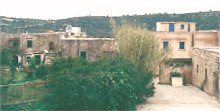
The village covers an area of 700 acres and it consists of two sections, the
Lower village (Katohori) that is the traditional part of the village, and the
upper village (Panohori) that is continuously growing since the beginning of the century. Today the village has approximately 750 inhabitants.
The
cultural inheritance of the village of Vori is very important and there are many sights and monuments worth visiting.
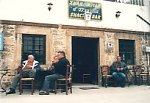
Due to its unique beauty and historical importance, it was characterized by the Ministry of Culture of Greece a
traditional protected village in 1978.
According to the tradition, the name of the village is derived from the name of the son of the king of Phaistos Radamantis, Voros.
Another explanation for the name Vori is its location (its located north of Phaistos ,"voras" meaning north in Greek) .
The village was populated continuously from the First-Minoan period (1800 BC) till today and this is certified by the numerous pottery that was found in the district of the village (Minoan, Hellenistic, Roman, Medieval, Renaissance).
Vori is the capital of the county of Pirgiotissas since the 17th century. In all the great Cretan revolutions, Vori participated actively.
In 1995, during a ceremony, Vori became a fraternized community with the communities of Camblanes and Meynac in France.
The facilities that the village offers are many:
- The Municipality's office where the visitor can get general information concerning the village and the surrounding area.
- Doctor's office
- Hall of mortgage records
- Agrarian cooperative
- Primary school
- Kinder garden
- Outdoor theatre
- Museum of Cretan Ethnology-Research Center
- Foot ball and basket ball fields
- Local PTT office
There are also a hotel and many rooms for rent, restaurants, traditional cafes, a bar, several stores including two pottery workshops and a gas station.
Local Economy
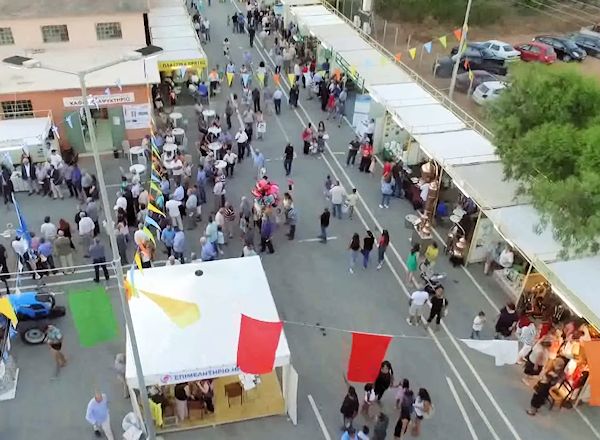
Every summer the successful Agricultural and Commercial Exhibition of Vori is held, with a large number of enterprises, manufacturers and services participating in it.
The total area of the municipality of Vori is 11.000 acres in the most fertile part of the Messara valley.
The main occupations of its people are agriculture, stock breeding and services, while the main products of the area are:
- Olive oil
- Horticultural products
- Raisin
- Citrus fruits
- Wine and alcohol
These products are mainly exported.
Another important source of income for the locals is from services offered (bakeries, furniture workshops , handicrafts, etch.)
Sights & Cultural inheritance
The church of the Presentation of Virgin Mary.
The church is located between the old and the new village. It is an imposing church built during the years 1864-1881.
The temple of Agios Ioannis.
The temple of Agios Ioannis is a small domed temple in the center of the old village of Vori.
The main temple was built around the 12th century while the church vestibule was built in the 13th-14th century. Today the temple is covered with tiles.
The inner temple used to be painted with frescoes, from which today are preserved only those of the dome and of the holy altar.
The church of Agia Pelagia.
The church is located at the western edge of the village and it was a cultural center during the renaissance period. It is a domed church dated from the 16th century.
Loutro
East of the village, in the location the called Loutra (baths), there is a domed stoned building, that is believed to be a Turkish bath. In all the surrounding area various pieces of pottery have been found.
Towers
In the village there are two towers dated from the renaissance period. The first one is placed northwest of the village. From this tower only the ground floor is saved today, on which a neoclassical house is built. The second one is placed north of the church of Agia Pelagia and is saved intact, as it was after some restoration during the Turkish occupation.
There is also a
Turkish tower, built east of the village in the location called Koules. The tower housed a small military garrison.
Outside the village but within the limits of the municipality of Vori are some unique monuments.
The monastery of Panagia Kardiotissa
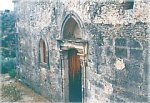
It was built in the 15th century adorned with wonderful frescoes.
The monastery today is deserted. Its peak can be traced during the Venetian occupation. It was probably destroyed during the siege of Iraklion by the Turks (1645-1669).
In accordance to the tradition the icon of Panagia (Holy Mother) was found under an olive tree. This tree was sacred and its leaves were supposed to be a cure for the illness for those who wore them as amulet.
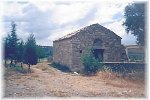
The domed
temple of Agios Georgios Kontaras built in the 12th century also painted with frescoes.
The temple of
Agia Fotini and the temple of
Agia Paraskevi built in the 15th century.
There is also a unique in Crete water mill, called
Gerontomilos, built in the 16th century. The settlement contains two wells and the house of the miller.